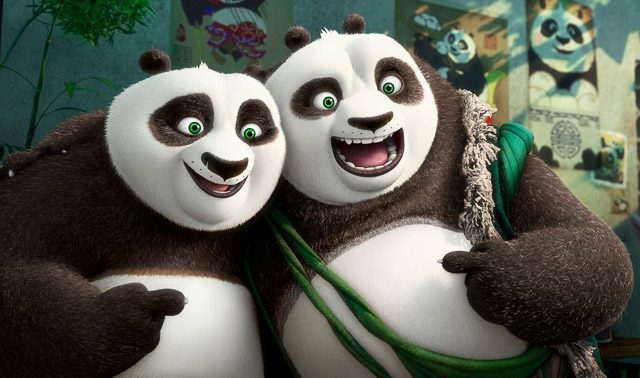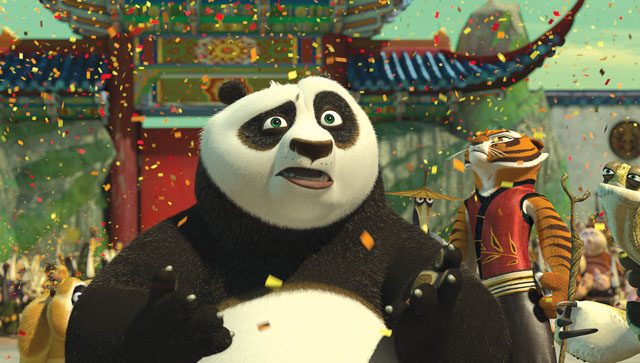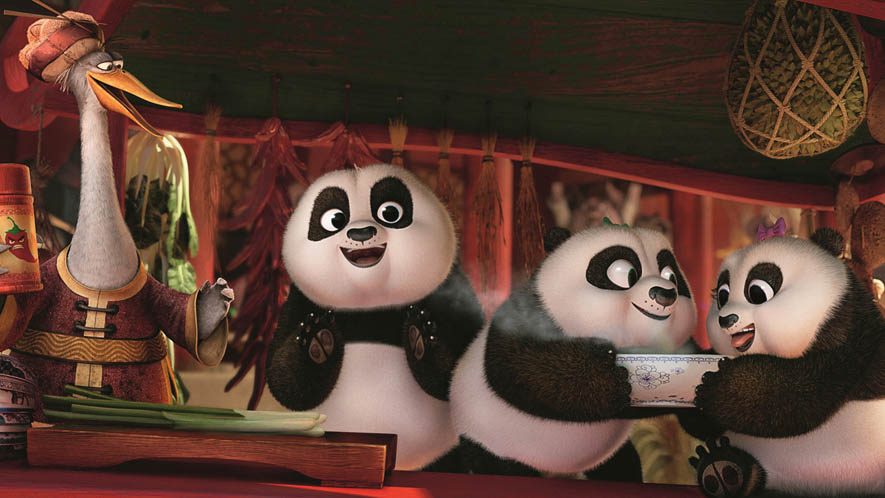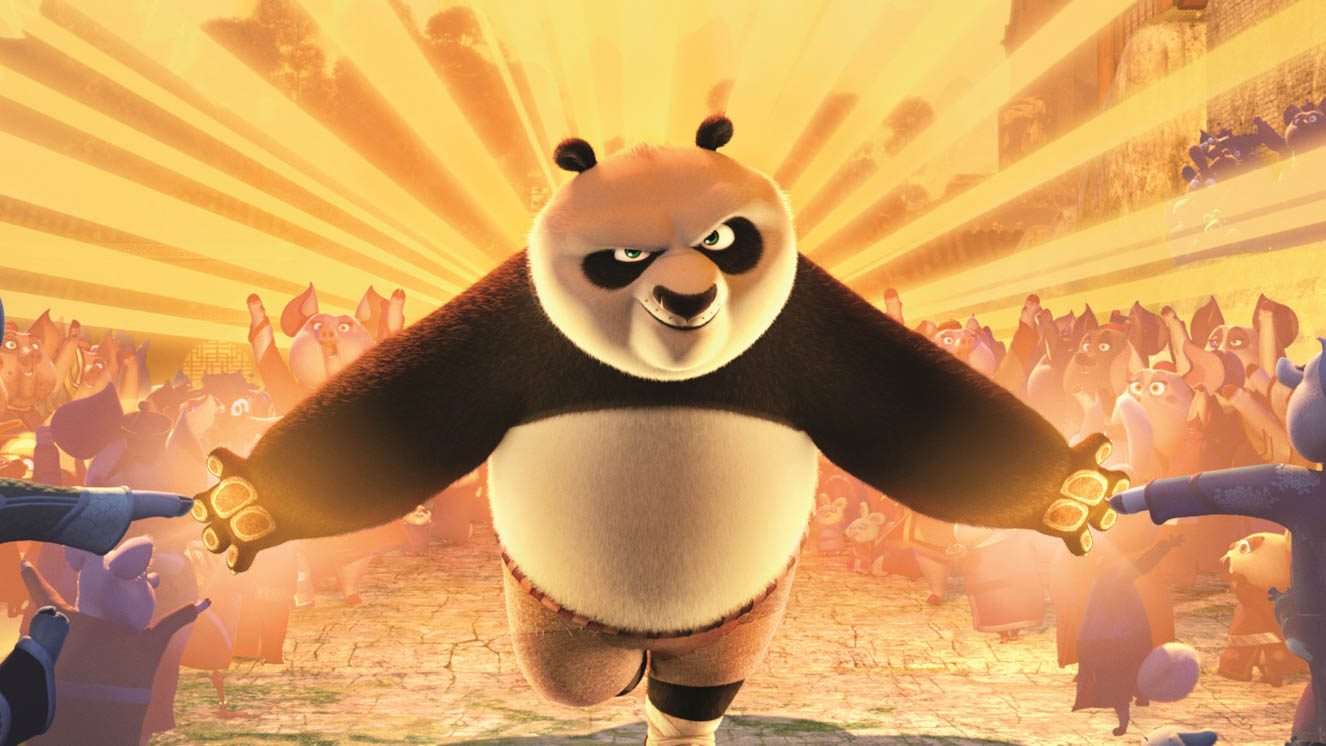SUMMARY
This is AI generated summarization, which may have errors. For context, always refer to the full article.

The genre that the Kung Fu Panda movies have repetitively parodied throughout the years is one that is heavily defined by formula. Amidst the movie series’ predictable tale of its standard-issue hero overcoming physical and spiritual trials to overcome a far stronger opponent, wuxia (literally “martial warrior”) films are almost always draped in visuals that often transcend the mechanical plot they adhere to. (IN PHOTOS: A look at new characters in ‘Kung Fu Panda 3’)
The first Kung Fu Panda, directed by Mark Osborne and John Stevenson, had novelty going for it. Its playful appropriation of Po (Jack Black), an overfed and charmingly immature panda, as an up and coming martial artist is enough to sustain a feature length film.
Moreover, its east-meets-west antic is exploited for whatever its worth, to the point that the film doesn’t really strike as a clever piece of cartoon but as a hodgepodge of jokes strung together by a Hollywood-ish appreciation of the orient.
Sequel sickness

Kung Fu Panda 2 is left with just a fraction of the first film’s novelty but with heavy expectations to fulfill.
Jennifer Yuh, who directed the imaginative opening of the first film and is tasked to take the helm from Osborne and Stevenson, infused the series with a visual richness that is often neglected in cartoons that are all about gloss and slapstick.
The sequel is beautiful to look at. It possesses a color palette and an animation style that makes it feel like it isn’t just making fun of the culture it is lampooning, but that it at least has a certain respect for it.
Sadly, the storytelling did not evolve as much as the visual design. Kung Fu Panda 2 expanded the universe of Po by infusing his story with a dramatic past, which in turn is the springboard of the franchise’s 3rd installment. The sequel is back at having unlikely hero Po fighting off an even greater opponent and learning a thing or two about himself and his capabilities along the way.
Visual promise 
Now, Kung Fu Panda 3 doesn’t stray far from the formula. It still features Po, who has now established himself as a great warrior with the heart and humor of a kid, fighting another opponent who wields a power that is more immense than anything he has encountered before. The story remains the same, only this time, the backstory that is only teased in the sequel becomes a major plot point. (WATCH: First trailer for ‘Kung Fu Panda 3’)
Kung Fu Panda 3 is spectacular when it needs to be. The movie, co-directed by Yuh with Alessandro Carloni, has moments that come close to being sublime.
In a way, the story, which now involves a certain Spirit World, a villain that has jade warriors at its command, and an entire village full of overeating panda bears, is fully utilized for its visual promise, with bursts of patterned lights accompanying the standard-issue action sequences that are all backdropped in exoticized locales.
Reliance on formula

The franchise’s reliance on formula however is the 3rd film’s undoing. While Kung Fu Panda 3 is able to buoy interest with its dynamic visuals, its nearly mechanical way of pushing the narrative towards its grandiose climax is quite a struggle.
The film starts wonderfully, with Po’s wisecracks fresh out of the box and the rest of the movie’s characters doing their own hilarious things. However, the movie seems to chew more than it can swallow, stuffing itself with more characters than its petty plot can handle.
Midpoint, the film is drowning in its own excessive silliness, and its monotonous string of joke-and-spectacle gimmicks becomes quite tedious.
Thankfully, it picks up. It even manages to end in a note that recalls the indelible highs of the first Kung Fu Panda’s bid at being a comical underdog story. It’s good enough, despite the fact that it is brazenly just a beautiful repeat. – Rappler.com
 Francis Joseph Cruz litigates for a living and writes about cinema for fun. The first Filipino movie he saw in the theaters was Carlo J. Caparas’ ‘Tirad Pass.’ Since then, he’s been on a mission to find better memories with Philippine cinema. Profile photo by Fatcat Studios
Francis Joseph Cruz litigates for a living and writes about cinema for fun. The first Filipino movie he saw in the theaters was Carlo J. Caparas’ ‘Tirad Pass.’ Since then, he’s been on a mission to find better memories with Philippine cinema. Profile photo by Fatcat Studios
Add a comment
How does this make you feel?
There are no comments yet. Add your comment to start the conversation.